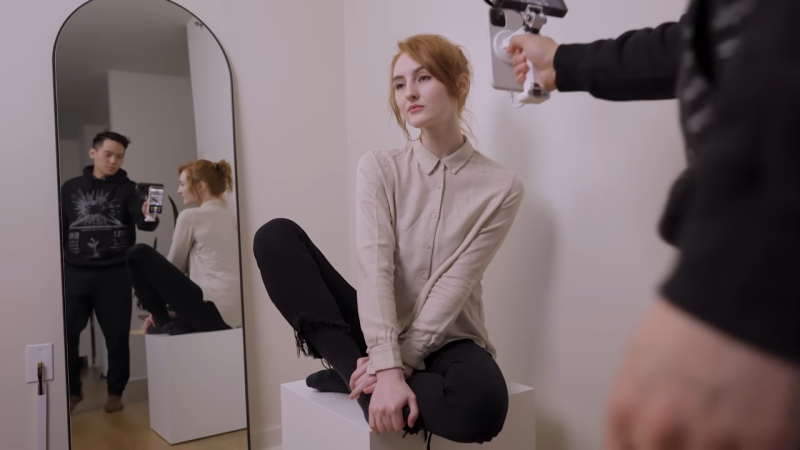Apple’s FaceID system uses infrared depth-sensing technology to authenticate people via their faces. It can also be used for simple 3D scanning, and [Scott Yu-Jan] found a better way to do that.
The main problem with using an iPhone as a 3D scanner in this manner is that the sensor is built into the front side of the device. It’s great for scanning your own face, but if you’re trying to scan an object, you can no longer see the iPhone’s screen. [Scott] solved this problem by slapping together a handheld 3D printed device to hold the iPhone along with an external monitor. This allowed Scott to scan while still seeing what was going on.
Having noticed that some of the 3D scanning apps produced strange, glitchy results when scanning faces, [Scott] decided to innovate artistically. He employed [Andrea] to model, took some scans, and Photoshopped the results into some impressive posters.
Overall, [Scott] demonstrates that it’s relatively easy to repurposed the iPhone for improved 3D scanning. With a simple design, he has a handheld scanner that works way better than just the phone on its own. Alternatively, consider getting into photogrammetry instead.















Awesome idea and execution using 3d printing. I really like the results and the available posters and puzzles.
But from iphone 12 theres a actually a lidar at the back? Not a hack, but makes pretty awesome scans!
iPhone 12 and 13 pro’s have lidar on the back. It’s stated purpose is for AR and photography.
Not the greatest resolution ( >1cm), but for scanning larger objects, or for roughtwork, it’s great.
The front facing scanner is an IR dot projector. Better resolution, for face unlock, but loses tracking easier
would two (low-tech, lightweight, no power requirements) mirrors also work (like in a backwards looking periscope construction)? If not for the display then why not for the scanner itself?
I was thinking the same thing. Probably the mirrors would be better used to move the display view rather than the IR/facetime stuff, although if the mirrors reflect IR, why not? you might need first surface mirrors, if the glass absorbs IR of that wavelength. See if a pane of glass shows as a surface with those 3rd party faceid apps
The depth sensing camera is a Structured Light sensor, not a Time-of-Flight sensor, so would not be able to ‘see’ the mirrored surfaces. A periscope or chevron arrangement should work just fine for folding the path.
Why does HAD ever have articles on Apple related tec, it is as locked down and proprietary as it gets.
Speaking of myself, I’ve done all kinds of hacky things with my macs and iphone (still do), including back in the day using a sony Ericsson t68i to control my telescope hooked up to my mac over bluetooth long before it was cool.
This article was on a guy using the faceID/IR stuff on an iphone, making a custom holder for that and an external screen, to better make art. The faceID apis are open enough for third party apps to use them. That’s locked down?
The entire platform is fascistic in that they can decide to remove software from your device.
Not an Apple user but when it’s as easily and widely available as iPhones: why not?
Have a look at what pro 3D scanning devices cost…
Really nice video and workflow – thanks! Would
it have worked to screen-mirror the front facing camera to a TV behind the model? Appreciate may have been a bit more awkward positionally
If you’ve got an 2nd iPhone laying around, you might be able to use that for screen mirroring without using cables, supposedly ApowerMirror can do it, but haven’t tried it myself. Also they might be able to stick to one another with the right magnet, otherwise doublesided tape ;)
Search SureScan 3D Scan mirror on google, you will find it is quite easy to scan 3D with FaceID.
Hi! I would like to shoot some cool videos like you did at 1:05 in your video! You don’t mention the app!
Thanks and have a great day!